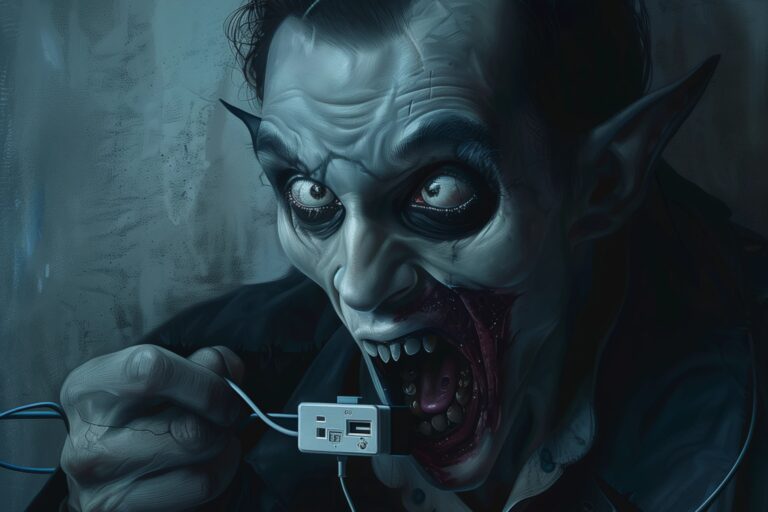You’ve just finished your day, shut down your PC, TV, and other devices, and you’re ready to go to sleep. But are your devices really as off as you think they are? Or are they still adding to your energy bill?
By the way, the video version is at the bottom of the article.
What’s the Deal with Vampire Power?
When we say “off,” most of us believe that our devices are completely inactive. However, many of today’s electronics have what’s called a standby mode. Even when turned off, many electronic products are just in a state of reduced energy consumption, ready to spring back to life instantly. This mode is often referred to as “standby.”
Think about your TV. You can turn it on with the remote if it’s in standby. If it’s completely off, you have to turn it on with the button before you can use the remote. Or consider your PC monitor. It automatically starts when you turn on the PC and goes into standby when you shut down. But it still consumes power if you don’t turn it off with the button or unplug it.
This consumption that occurs when the product is turned off but not entirely off is what we’re referring to as vampire power.
How Much Does Vampire Power Add Up?
Depending on how many devices, products, or gadgets you have, vampire power can add up significantly. Even with regulations depending on the state or continent we live on, not all products comply with the 1-2 Watts in standby as the law says. There are different interpretations of the law, partial compliance with regulations, or even additional functions in standby.
For example, I have a split AC unit that consumes 5-6W in standby, and it was made in 2022, so it’s not exactly old. A TV from around 2015 also consumes a few Watts in standby. The microwave oven has a display too. I haven’t measured it, but I’d be surprised if it only used 1W in standby.
If, throughout your house, you have a total of 20 Watts of such consumption, this is noticeable if we think long-term. Let’s say per year. If 50% of the year those products are in standby, you have about 87 kWh consumption.
What Can We Do to Reduce Vampire Power?
Even if laws and standards imposed on manufacturers help us not to waste so much electrical energy, we can also be more careful and unplug or turn off devices with a smart plug or power strip that we do not use and which is not a hassle to start up again. You can’t always rely on regulations because there are always loopholes or oversights you weren’t aware of.
Upgrading to newer devices can also help. An upgrade not only brings extra benefits or features but can also consume less electrical energy, thus being more efficient.
For example, a Dell U2417H monitor model from 2016 consumes about 18.1W when used, while its newer version U2424H model from 2023 consumes on average 13.7W when used. You get lower consumption while maintaining the same screen size and resolution, plus better color coverage and faster response time.
Conclusion
Off doesn’t always mean without energy consumption. By being aware of these phantom consumers, you can take real steps to reduce energy consumption and your bills. Of course, you’re also reducing your environmental footprint. While unplugging a single device won’t save the planet, every little bit helps. It is also worth mentioning that a device that is unplugged or plugged into a switched-off power strip is less susceptible to power surges or other grid issues.
And if you’re not using a device anyway, and it also reduces your electricity bill, it’s a good habit to turn off that device completely as long as turning it on when needed isn’t annoying. I believe we can minimize our power bill and avoid vampire power a lot without sacrificing our comfort.






